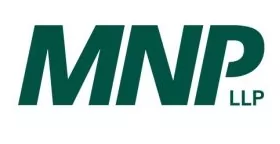- with readers working within the Banking & Credit industries
Wholesale pricing is coming to British Columbia starting April 1, 2015
A new formula for the wholesale pricing of wine is scheduled to take effect in British Columbia on April 1, 2015. According to the B.C. government's News Release dated November 19, "starting April 1, 2015, all liquor retailers, including BC Liquor Stores, will purchase their product from the BC Liquor Distribution Branch (BCLDB) at a common, wholesale price. This will do away with the existing complex model that offers retailers various discounts depending on the type of retailer they are."
The current system works backwards from fixed retail display prices in government liquor stores to generate a wholesale price. Various types of retailers must purchase wine through the BC Liquor Distribution Branch (BCLDB) at prices ranging from the full retail price (net of taxes) less 30% for independent wine stores, to 16% for licensed retail stores. Licensed establishments such as restaurants, bars and hotels pay the full retail price with no discount.
The new system (effective April 1, 2015) works upwards from the supplier's cost and applies a single standard markup (89% on the first $8.81/750 ml bottle plus 27% markup on the remainder) to arrive at a wholesale price. This wholesale price will apply to all types of retailers, with the exception of licensed establishments (restaurants, bars, hotels) who must continue to buy from government liquor stores at their retail price, with no discount. Interestingly, the 27% second tier markup noted above was originally supposed to be 67%, but was reduced in a January 15, 2015 government announcement. This change was likely in reaction to industry concerns that the new wholesale pricing structure as originally announced might actually cause some significant retail level price increases to medium and higher priced wines.
In preparation for the change to the new wholesale pricing system, the BCLDB has recently sent a request out to all B.C. wineries asking that they confirm the wholesale cost (which they call "prime cost") for each of their products. As a reference point, they have provided the prime cost on file for each currently listed product. Presumably this is the prime cost obtained from working backwards from the current LDB display price under the current system. Wineries have until February 13, 2015 to change their prime costs, if they so choose. If they don't, the BCLDB will move forward with the existing prime cost in their system.
But what does prime cost represent? For a wine manufacturer, this amount should capture all the direct costs of producing a particular wine product (grapes, direct labour, supplies, bottling costs & packaging as well as the direct components of overhead – annual amortized cost of equipment, barrels and manufacturing facilities). The process of capturing costs of production and allocating them to specific products can be complicated and is definitely beyond the scope of this article. In our experience, most small- to medium-sized wineries do not have accurate calculations for prime costs and rely instead on estimates.
Under the current pricing structure, B.C. wineries were able to exercise some degree of control over retail store prices through the price they established with the BDLDB. Under the new wholesale system, wineries will have consistency in the price they receive for their wine from various types of retailers, but will have less control over the price on the store shelves. This is because retailers will be much freer to establish their own retail prices based on their desired retail markup.
Since the Government's announcement last November, concern has been expressed in the B.C. industry that the new wholesale markups will lead to higher retail prices for medium and high-priced wines. Unfortunately, these are the price bands where most BC VQA wines currently reside.
The following table demonstrates the issue of rising prices for medium and high-priced wines, even after factoring in the reduction in the second tier markup from 67% to 27% for wines with a wholesale cost of greater than $8.81 per bottle. The table compares the retail display price (before tax) under the old and new systems, at various prime cost per bottle levels. A retail level markup of 30% is assumed, which this is basically consistent with the BCLDB store markup embedded in the current system. The calculations were done using the BCLDB's "Pricing Simulator" (old system) and "Wholesale Pricing Calculator" (new system) tools on their website.
|
Prime cost/bottle |
$10 |
$15 |
$20 |
|
Retail price (pre-tax): |
|||
|
old system |
$20.50 |
$28.05 |
$35.60 |
|
new wholesale pricing system |
$23.76 |
$32.02 |
$46.28 |
|
Expected increase in retail price |
$3.26 |
$3.97 |
$10.68 |
It seems clear that when retailers are feeling squeezed, there will be pressure on the suppliers to share the pain by reducing their wholesale prices. That brings us back to the current decision facing B.C. wineries regarding whether or not to adjust their prime cost, which affects the wholesale price to all retailers under the new system. The table above demonstrates that leaving prime costs unchanged puts pressure on the retailers to either increase retail prices or accept a decrease in their profit margin. Of course, a retailer could also choose to buy from a different winery with a lower wholesale price.
If all this sounds confusing – think of the total profit available on the sale of a bottle of wine as a pie. The only way the pie gets bigger is if the end retail price to the consumer goes up, and that is clearly not the B.C. government's goal in reforming the system. So if the pie is no bigger, the only way B.C. wineries get a bigger slice is to:
a) Have the retailer accept a smaller slice, or
b) Be their own retailer and sell more wine through their own wineshop or direct-to-consumer.
The only way to really understand how much room you have to work with is to develop a thorough understanding of the real cost to produce each of your products. Estimating is unreliable and can lead to ineffective pricing decisions that wipe out your bottom line without you even knowing.
The content of this article is intended to provide a general guide to the subject matter. Specialist advice should be sought about your specific circumstances.


